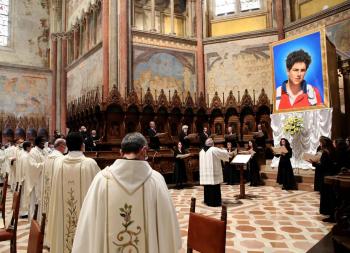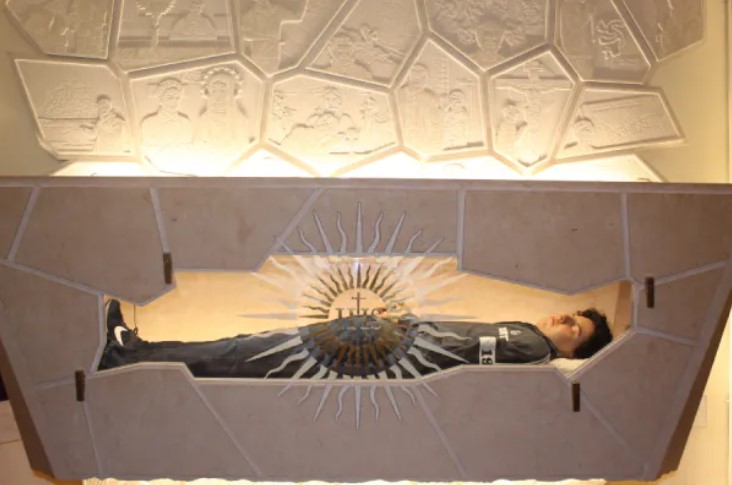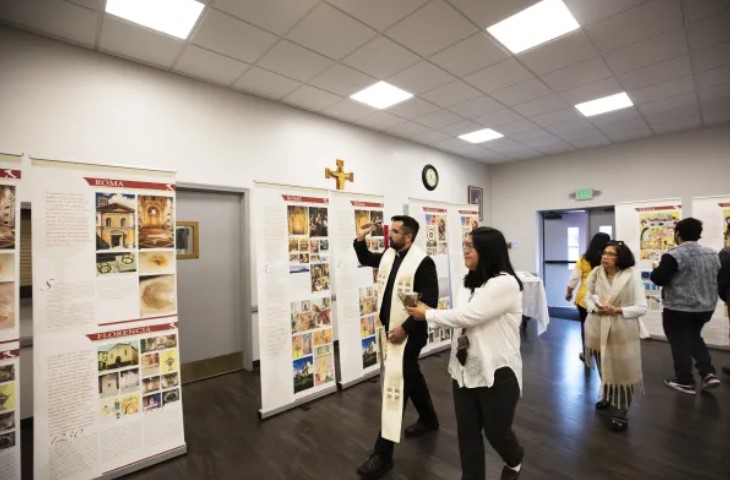Meet Blessed Carlo Acutis.
His mother describes Carlo as an “ordinary boy” with “great joy” who enjoys video games and pets. Yet, this ordinary child was something extra to the world around him, specifically within the Catholic Church and the Holy See.
Following a short but sensational life, he is set to become the first-ever Millennial Saint by the Vatican.
Born May 3, 1991, in London, England, Carlo Acutis expressed a remarkably devout love for the Eucharist at age seven, a holy sacrament in the Catholic Church known as Holy Communion, Blessed Sacrament and the Lord’s Supper. His mother, Antonia Salzano, noted this affection as exceptional because her first communion, confirmation, and wedding were the only church events she’d ever attended.
Yet, according to his website, Carlo was the one who demanded his parents and relatives take him to mass. Every day.
Young Carlo’s life ended short when he tragically succumbed to leukemia at the age of 15. Typically, that’s where someone’s story ends, but it was only the beginning for him.
Carlo Acutis: From Boy to Beatification

From Carlo Acutis’ love for the Eucharist to reciting his Rosary several times daily, his mother and relatives believed God’s touch was upon his life. His father worked in Milan, Italy, where his joy and adoration for the Church grew.
Even as a child, his witness left an impression on thousands of people, including his au pair, Rajesh Mohur, who was Hindu and later converted to Catholicism. If he wasn’t preaching to family and friends, he was encouraging schoolmates to consider the truth of God. What brought him is his love for video games and computer programming.
The Catholic News Agency says Carlo’s computer savvy was so advanced by age 12 that he taught himself how to code, becoming an expert at C and C++. Thanks to familial contacts, his prodigious talent for creating makeshift websites (this is the early 2000s) led him to develop websites for Italian parishes and even the Vatican.

Instead of hacking or gaming, he utilized his gift to create an exhibition on the over 150 Eucharistic miracles recognized by the Catholic Church. To help him complete his divine project, Carlo chose vacations in 17 different countries where many of these miracles took place by way of receiving Holy Communion.
That’s where the miraculous is said to happen to Carlo Acutis.
In the midst of his travels, he and his family prayed before hosts that have turned into blood. It is important to note that while he did not come from an overly religious family, he was instrumental in their conversion.
It was during these travels Carlo Acutis was diagnosed with advanced leukemia. Before he died in October 2006, Carlo offered his sufferings for Pope Benedict XVI, the Church, and for his direct entry into heaven. This is called “Redemptive Suffering,” when people of an ardent Catholic faith offer their tribulation as a proxy for the salvation of others or reparation for sin.
That act created significant awareness about Carlo’s life, which he dedicated to the Catholic Church. When parish priests and the Vatican recognized his dedication, they began to investigate his life more deeply.
The Path to Millennial Sainthood

The process for someone to become a Saint, known as “canonization,” the Pontiff ultimately declares an adherent of the Catholic faith to be “united with God in Heaven, an intercessory to God on behalf of the living, and worthy of universal veneration.” Franciscan Media notes the four-step canonization process:
- A Diocese Bishop notes the life of someone at least five years and opens an “official cause” for canonization. If there are no objections, the individual is considered a “Servant of God.”
- To graduate to becoming “Venerable,” the collection of the writings of a candidate and a detailed summary of their life and virtues (known as a “Positio”). When complete, the Cause and Positio are sent to the Pontiff’s office in Rome seeking a “Decree of Heroic Virtues.”
- To earn “Beatification” (from two Latin terms meaning “to make Blessed”), the miraculous intercessory power of prayer must be noted–health-related or natural. A Papal commission will review the notes of the miracle to ensure it was a result of intercession. Then, a “Decree of Miracle” is granted.
- Following a beatification ceremony, a second miracle must be noted and decreed. Once that is official, and acts of veneration are coupled with those acts, canonization is granted, and sainthood is recognized throughout the Catholic Church
Carlo’s path to becoming the first-ever Millennial Saint began in November 2016, when he was named Servant of God by Cardinal Angelo Scola, bishop of Milan. Pope Francis declared Carlo Acutis Venerable in 2018, who later signed for a beatification ceremony on October 10, 2020.

The Eucharist exhibit earned international acclaim following Carlo’s Beautification ceremony. It has been displayed in front of over 3,000 parishes on five continents. As for the second miracle necessary for canonizing the now “Blessed” Carlo Acutis, a decree was granted on May 23, 2024.
The miracle took place for Valeria Valverde, a 21-year-old who seriously injured her head in a bicycle accident while studying in Florence in 2022. She was near death, but it’s said that Carlo’s intercession over a Eucharist given to her created a miraculous healing. The Catholic News Agency noted Carlo’s first miracle that led to his beatification involved a 3-year-old boy in Brazil in 2013 who had been diagnosed with a malformed pancreas.
No date for Carlo Acutis’ canonization has been proclaimed. Still, it is considered during the 2025 Jubilee Year, which includes a special jubilee for youth and a jubilee for teenagers.


